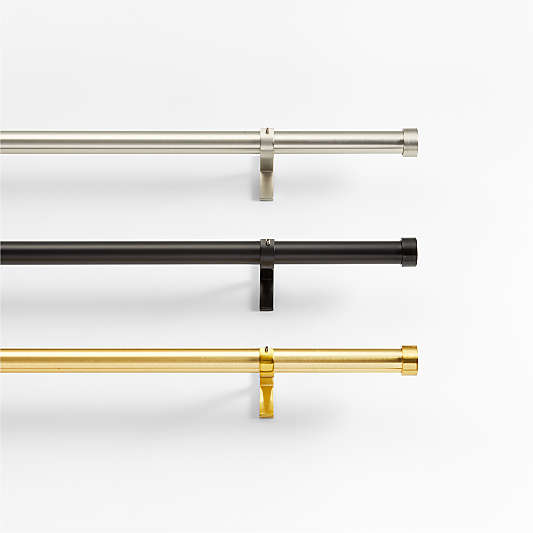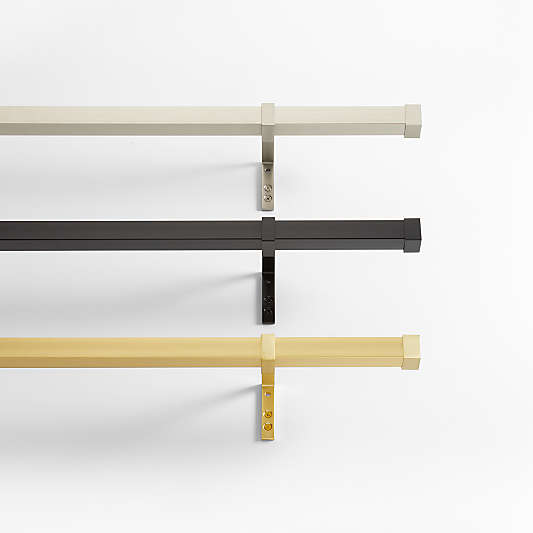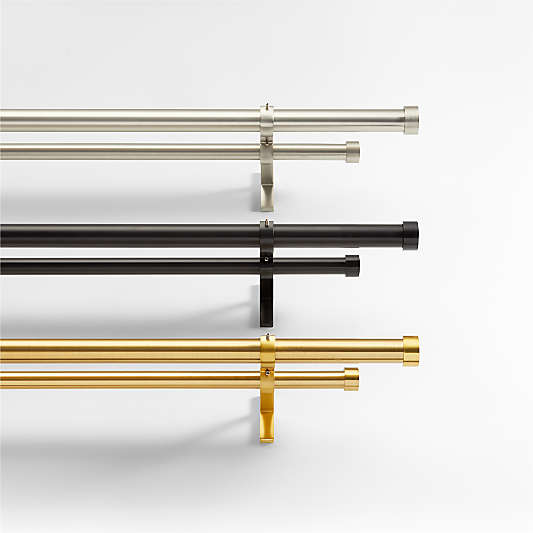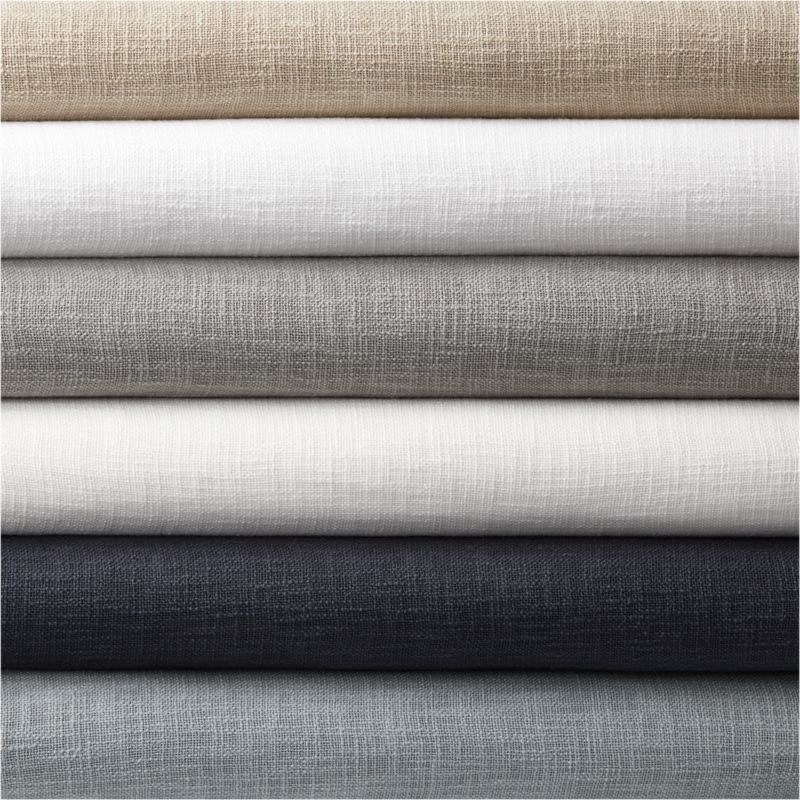By: Crate & Barrel Editor

Window curtains can transform a space, finishing newly decorated rooms with a sense of softness and style. Not only that, they offer privacy, insulation and noise reduction. Follow our curtain hanging guide to learn how to hang curtains for the look you want in your own home—hint: measuring is key.
Here’s what you need to start:
- Curtains
- Curtain Rods & Finials
- Mounting Hardware
- Drill
- Screws
- Tape Measurer
- Level
- Screwdriver
- Pencil
measuring width: curtain rods & panels
Before getting started on curtain rod placement, keep in mind that curtain rods have more visual appeal when placed above and outside the window’s molding. To make sure it’s positioned properly, keep a pencil within reach as you work to leave light markings on the wall to ensure evenness.
If your goal is to make a room feel bigger and brighter, first consider how wide to hang curtains. It’s recommended that each end of your curtain or tension rod extends 3 to 6 inches beyond the frame of the window on both sides. For rooms that are smaller or have multiple windows close together, consider hanging single or double curtain rods less wide to avoid a cluttered look. Then, hang your favorite types of drapery, such as rod pocket curtains, curtains with liners or drapes with curtain rings. When it comes to determining how high to hang curtains, consider hanging curtains from the ceiling to make the room feel taller.
Keep in mind that curtain panels should be two to two-and-a-half times the width of the window in larger spaces, and one to one-and-a-half times the width of the window in smaller spaces.
Keep reading to learn more about finding the best curtain height for your room.
Pro Tips
- Make sure the width of each curtain panel extends a few inches beyond the window, covering part of the wall as well. This creates a loose and breezy look that gives the illusion of wider windows.
- Worried about a window curtain that looks off-center? Use an adjustable curtain rod to make one end slightly longer than the other.
measuring curtain lengths
Most experts agree on two things when it comes to determining how high to hang curtains: The placement of the curtain rod should be in relation to the ceiling, not the window. Also, keep in mind the curtain height from the floor. The space in between should be just enough for each panel to barely brush the floor. This helps your drapes to stay in place, minimizing how dirty they get and making it easy to vacuum the floor.
The best way to measure curtain length is to first determine the distance between the floor and the height of the curtain rod. Be sure to mark this spot with a pencil, then round up to the nearest panel size. Most standard curtain lengths are 63”, 84", 96", 108" and 120” inches.
Generally, drapery that hovers about ½ inch off the ground provides a crisp and clean aesthetic, while window curtains that float a bit higher—think 2 to 3 inches—offer a more casual look. Going for a more romantic touch? Add 4 to 6 inches to allow for puddling on the floor.
Pro Tips
- Be sure to pre-shrink and iron your curtain panels before determining the height at which they look best. Doing so minimizes shrinkage during future washes.
- If trying to determine the best curtain height for shorter panels, measure from the bottom of the window sill to a pencil mark made 4 to 6 inches above the window frame.
how to hang curtains
After you hang your curtain rods and determine their dimensions, it’s time to begin hanging curtains. Before getting too involved in the installation process, take a minute to understand how to hang curtains efficiently. First, enlist the help of a family member or friend. Have them hold up one end of the curtain rod—with the panel of your choice, wide curtains or drapes with liners—in front of your pencil marks on the wall.
We recommend looking at your window treatment from multiple angles or taking pictures of it on your phone for the best visualization. Once you're satisfied with the placement you can easily install curtains to your liking.
Pro Tips
- Not sure how to hang curtain rods with a sloped ceiling? One way is to give the illusion of balance by hanging the curtain rod so that it follows the symmetry of the ceiling. The rod will appear to be level even if it isn’t.
- It’s okay to give windows in the same room different drapery. For instance, mixing and matching curtains with different patterns, such as solid or striped curtains add a fun visual touch.
- Panels aren’t going to work for every window, and that’s ok. Windows that are near floor heaters, above countertops and other potential obstacles can be left as they are or fitted with custom drapes.
how to accessorize curtains & window treatments
Want to add extra flair to your windows? Explore different curtain hanging styles and curtain hardware to match your existing aesthetic. Then, opt for curtain accessories, such as end cap finials and curtain rod brackets that reflect your personal style. For instance, silver curtain rods paired with metal curtain finials create a cohesive look. Alternatively, brass drapery rods add a chic twist when coordinated with marble end cap finials. In addition, curtain tie backs are a fun and easy way to subtly experiment with different looks in your home. Think rope for a bit of texture or colored tie backs for a subtle contrast. Either way, tie backs help filter more natural light into the room and give each curtain panel an appealing swooping effect.
Pro Tips
- If using wall-mounted tie backs, be sure to install them two-thirds of the way down the window and make sure the curtain hardware coordinates with the rod.





